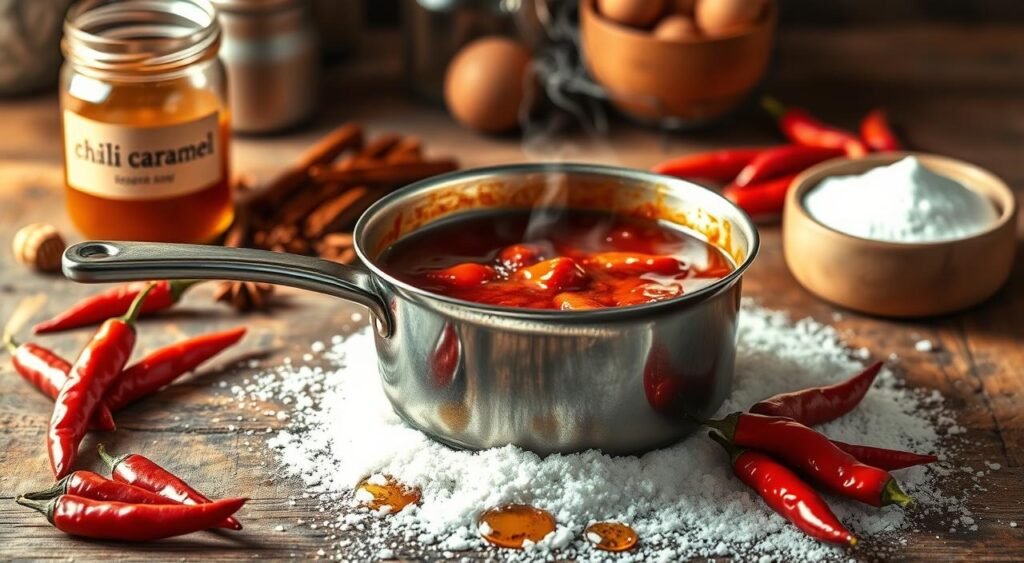Introduction
Hot sauce lovers know that the combination of heat, flavor, and thickness can enhance any dish. Among the many types of peppers, the Serrano pepper stands out for its flavor and moderate heat. In this article, we will take a look at how to make your own Serrano Hot Sauce at home. Perfect for tacos, grilled meats, or drizzled over eggs, this sauce is sure to satisfy your taste buds.
Understanding the Serrano Chili
Before we get to the recipe, let’s take a closer look at serrano peppers. Native to the mountainous regions of Mexico, serrano peppers are typically small, about 1 to 4 inches long, and are usually green or red when ripe. They have a heat rating of 2,500 to 5,000 Scoville, making them a great choice for those who prefer mild spice without compromise.
Flavor Profile
Serrano peppers have a bright, grassy flavor with a hint of sweetness. This complexity makes them a top choice for sauces because they provide not only heat but also depth. Their flavor intensifies when cooked, making them perfect for hot sauces that need a little more character.
Health Benefits
Serrano peppers have many health benefits in addition to their culinary properties. They are rich in vitamins A and C, antioxidants, and may also help boost metabolism. Adding serrano hot sauce to your food not only adds flavor to your meal, but also gives it a healthy twist.
Essential Ingredients
To make this delicious Serrano Hot Sauce, you will need the following ingredients:
- Serrano Peppers: 10-12 fresh peppers (adjust to your preferred spice)
- Garlic: 4-5 cloves, peeled
- White Vinegar: 1 cup (you can also use apple cider vinegar for a milder flavor)
- Salt: 1-2 teaspoons (to taste)
- Sugar: 1 tablespoon (to balance the heat)
- Water: 1/2 cup (or more for desired consistency)
- Lime Juice: From 1 lime (optional, for a zesty finish)
Optional Add-ins
For a unique twist, consider adding:
- Onion: A small chopped onion for extra sweetness.
- Cilantro: A handful of fresh cilantro for a fresh herbal note.
- Spices: A pinch of cumin or smoked paprika to deepen the flavor profile.
Step-by-Step Recipe
Step 1: Preparing the Peppers
Start by thoroughly washing the serrano peppers. If you want a milder fish, remove the seeds and membranes, as they retain most of the heat. Keep them light for those of you who like to mess around. Cut the peppers in half lengthwise for easier stirring.
Step 2: Roasting (Optional)
For an extra layer of flavour, consider roasting the peppers and garlic. Preheat the oven to 200°C (400°F) and place half the peppers and whole garlic cloves on a baking tray and roast for about 15–20 minutes, or until bubbly and lightly browned. This step adds depth to the sauce and adds flavor.
Step 3: Blending the Sauce
Once the peppers and garlic are roasted, or if you prefer to skip this step, transfer them to a spoon. Add the white vinegar, salt, sugar, and water. Blend until smooth, adding more water as needed to reach desired consistency. The sauce should be thick but pourable.
Step 4: Taste and Adjust
Taste the sauce and adjust the seasoning. If you want it spicier, add more serrano pepper. If it’s too hot, add a little sugar or salt to balance the heat. If you choose lemon juice, squeeze it right in for an extra kick.
Step 5: Cooking the Sauce
Pour the blended mixture into a saucepan and bring it to a simmer over medium heat. Allow it to cook for about 10-15 minutes, stirring occasionally. This step helps meld the flavors together and thicken the sauce.
Step 6: Bottling and Storing
Once the sauce has cooled, pour it into sterilized glass bottles or jars. Make sure to leave some space at the top, as the sauce may expand when frozen. Store in the refrigerator for up to a month. For longer shelf life, consider canning your sauce.
Tips for Perfecting Your Hot Sauce
- Experiment with Vinegars: Different types of vinegar can alter the flavor profile of your sauce. Apple cider vinegar offers a fruity note, while white vinegar is more neutral.
- Play with the Heat: Combine Serrano peppers with other types of peppers, such as jalapeños or habaneros, to create a more complex flavor.
- Add Fermentation: For a tangy flavor, consider fermenting your peppers before blending. This process involves mixing them with salt and allowing them to sit for a week or two. The resulting sauce will have a distinct umami flavor.
- Labeling: Don’t forget to label your hot sauce with the date made and its ingredients, especially if you’re experimenting with variations.
Creative Uses for Serrano Chili Hot Sauce
Now that you have your homemade Serrano chili hot sauce, you might be wondering how to use it. Here are some delicious ideas:
Tacos and Burritos
Drizzle your hot sauce over tacos or burritos for a burst of flavor. It pairs particularly well with grilled meats, beans, and fresh vegetables.
Marinades and Dressings
Use the hot sauce as a base for marinades or salad dressings. Mix it with olive oil and lime juice for a zesty salad dressing that packs a punch.
Dipping Sauce
Combine your hot sauce with sour cream or yogurt for a spicy dip perfect for chips or veggies.
Eggs
Add a few dashes of your hot sauce to scrambled eggs or omelets for an exciting breakfast option.
Conclusion
Creating your own Serrano Hot Sauce isn’t just fun in the kitchen, it’s also a way to customize it to your own tastes and heat levels. With just a few fresh ingredients and a few simple steps, you can add flavor and a personal touch to your meals. Whether you like it hot or mild, this recipe lets you customize the sauce to your liking. So grab some serrano peppers and start making your own special hot sauce today!



